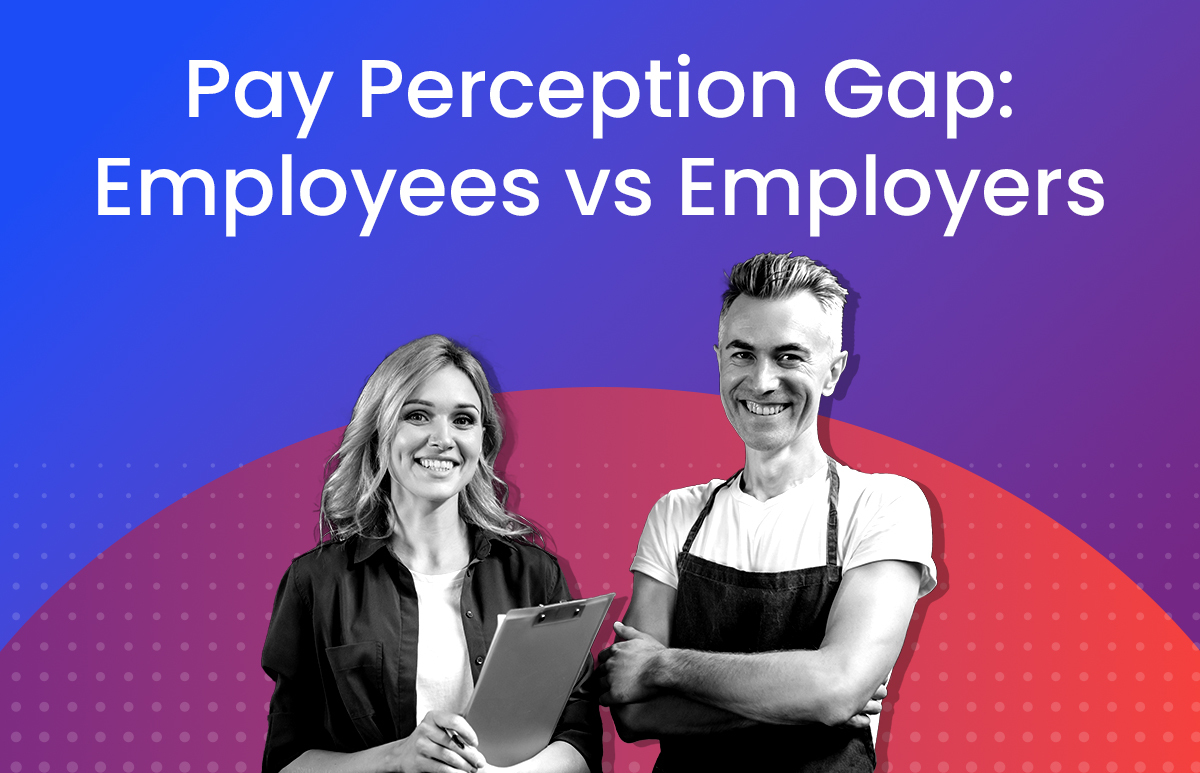Fact vs. Fiction: 4 Myths About the Gender Pay Gap You Need to Know

There are a lot of gender pay gap myths and misinformation. Do any of these arguments sound familiar to you?
“It’s illegal for women to get paid less for doing the same job, and therefore the gender pay doesn’t exist.”
“Mothers voluntarily choose to work fewer hours so they can look after their children.”
“Women don’t face the same challenges and obstacles they used to, and I find it hard to believe the gender pay gap exists in the 21st century.”
But no matter what you’ve heard about the reasons behind the gender pay gap, it is a fact that the gap exists and no country in the world has achieved gender pay equity yet.
In this article, we’re going to analyse some of the gender pay gap myths and bust them open.
What causes people to believe the gender pay gap does not exist?
A recent survey of 8,566 U.S. adults showed that an alarming 46% of men and 30% of women did not believe the gender pay gap existed.
In the study, men were more likely than women to attribute the gender pay gap to reasons such as, “women are generally in careers that don’t pay as much” and “women work fewer hours than men”. These perceptions not only simplify the issue, but it’s harmful to assume that women choose these options. Instead, the causes that lead to gender wage disparities across the world are much more complicated and often rooted in ingrained stereotypes and gender bias.
Some people believe the gender pay gap is a myth because they misunderstand what the gap is measuring. The gender pay gap involves comparing the average earnings of men and women across industries and occupations, and is not just about analysing salaries in like-for-like roles. In many countries, including Australia and New Zealand, it’s illegal for men to be paid more than women for performing the same work, or similar work of equal or comparable value.
4 common gender pay gap myths
Gender pay gap myth #1: Women choose to work in low-paying industries
In Australia and New Zealand, high-paying industries such as mining, construction, engineering, and information & communication technology are typically male-dominated. On the other hand, industries like education, healthcare, and social assistance, which generally pay less, are female-dominated. This wage disparity can be attributed to the perception that ‘women’s work’ is undervalued – a fact backed up by studies that have revealed that many female-dominated professions often pay less than male-dominated professions, perpetuating the cycle of inequality.
When scrutinising the gender pay gap, it’s essential to consider that women’s career choices are often influenced by societal and cultural expectations, as well as stereotypical gender norms. From a young age, girls may be discouraged from pursuing certain careers (such as careers in science, technology, engineering and mathematics) and instead steered towards more traditionally ‘feminine’ professions with lower average salaries.
To achieve true gender equality in the workforce, we need to challenge these outdated norms and create an environment where women feel encouraged and supported in pursuing careers in all industries. By breaking free from gender stereotypes, we can build a more inclusive and diverse workforce that benefits everyone.
Busted: Women are often dissuaded from joining high-paying, male-dominated industries. This can begin at a young age, but can continue into adulthood with a lack of female role models and a heightened risk of discrimination and harassment within certain industries.
Gender pay gap myth #2: Women are less committed to their jobs after they have children and choose to work fewer hours to raise a family
This could be one of the most contentious myths around the gender pay gap, as it’s often assumed that mothers choose to work fewer hours to prioritise their caring and domestic responsibilities. However, this is less about choice and more about circumstance. For example, their job may not allow them to work flexibly to balance their home and work life. Or, the ever-increasing cost of childcare makes it less financially viable to continue working full-time.
It’s true that in the majority of hetero-normative households (54%), the mother assumes the role of primary caregiver. Fathers represent just 4% of primary caregivers, and in the remaining 40% of families, the role is shared equally between both parents.
By assuming the role of primary caregiver, and therefore limiting the number of hours they can work, women can become more financially disadvantaged than men.
Busted: The burden of domestic and caring responsibilities often falls on women due to social and economic structures, restricting their choices, which can adversely affect their financial security.
Gender pay gap myth #3: Women aren’t as good as men at negotiating for pay rises
Studies have shown that women may be less inclined to ask for a pay rise, but those who do ask are still less likely to receive one compared to their male colleagues.
This was demonstrated in a 2022 YouGov study about gender pay parity, which found that 31% of men who asked for a pay rise had been successful, compared to only 21% of women. On the other hand, some studies have gathered evidence that women do ask just as often as men, but are still less likely to receive a pay rise.
Busted: Women are less likely than men to receive a pay rise when they request one, which can be attributed to gender discrimination and bias in the workplace.
Gender pay gap myth #4: Gender discrimination in the workplace is illegal and doesn’t happen
Discrimination in the workplace comes in many different forms, and women still face obstacles and challenges in the workforce that men do not.
A recent study by WGEA on gender equitable recruitment and promotion found that:
- Equally qualified women must send out significantly more applications than men to receive the same number of interviews.
- Stereotypes about which genders are better suited to certain roles are reinforced by using gender-coded wording in job ads, dissuading women from applying.
- Women are more likely to face tougher evaluation standards than men during the recruitment process and are more likely to have their achievements and qualifications scrutinised.
- Women encounter barriers to career development and opportunities due to stereotypical beliefs that they are less committed to their work than their male colleagues, or that they need to be protected from overworking.
All of these factors and more combine to drive the gender pay gap, with women of colour more likely than white women to experience discrimination.
Busted: Discrimination in the workplace still occurs and adversely affects women by limiting their opportunities which can lead to income inequality.
Where to start in tackling the gender pay gap?
When it comes to busting some of the common myths around the gender pay gap, data is your best weapon. While you may still come up against people who want to challenge you on these points, hard numbers and fact-based evidence are difficult things to argue with when presented clearly and concisely.
For any organisation, beginning by analysing the data behind the gender pay gap and collating gender pay gap statistics is the best place to start. From here, you can begin to analyse the numbers, discover trends within the data, and uncover the best way to combat these inequalities.
Want to keep up-to-date with ELMO’s content? Subscribe to our newsletter for first-look access to our free research, blogs, and resources.
 HR Core
HR Core 











